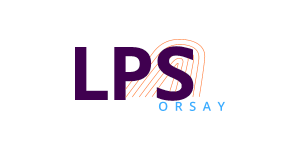We are delighted to welcome Masters level students (ArTeQ) to discover superconducting quantum qubits in a brand new hands-on assignment. This lab, supported by Quantum Saclay (QuanTEdu-France program), was developed as part of a collaboration at the University of Paris-Saclay between Marcelo Goffman of the Quantronique group (CEA Saclay – SPEC) and the Meso and NS2 groups at LPS with Meydi Ferrier (LPS – Meso), Julien Basset, Julien Gabelli, and Jérôme Esteve (LPS-NS2).
This module allows students to master the tools needed for coherent manipulation and reading of an artificial spin: the transmon qubit. They use a dilution refrigerator (20 mK), microwave equipment (amplifiers, attenuators, circulators, etc.), a vector network analyzer, microwave sources, and a dedicated programmable electronic board for rapid reading and microwave pulse generation. The sample studied includes a microwave resonator dispersively coupled to a transmon qubit in planar geometry.
Throughout the lab work, students perform qubit spectroscopy and learn how to manipulate it. Standard experiments include Rabi oscillation measurements, Ramsey fringes, and the determination of relaxation and decoherence times.
A unique hands-on experience at the forefront of quantum technologies!
Credits:
The superconducting circuit was designed and manufactured at SPEC by Marcelo Goffman (Quantronics group), who also developed the measurement device. The lab work took place at the LPS, which adapted and provided the cryogenic and microwave tools required for coherent qubit manipulation. The lab work was conducted alternately by researchers from the Meso (Meydi Ferrier), NS2 (Julien Basset, Jérôme Esteve, and Julien Gabelli), and Quantronics (Marcelo Goffman) groups.
The “QBITSUPRA” educational project, led by the LPS (Meydi Ferrier), was funded as part of the Quantum-Saclay call for projects (QuanTEdu-France).
